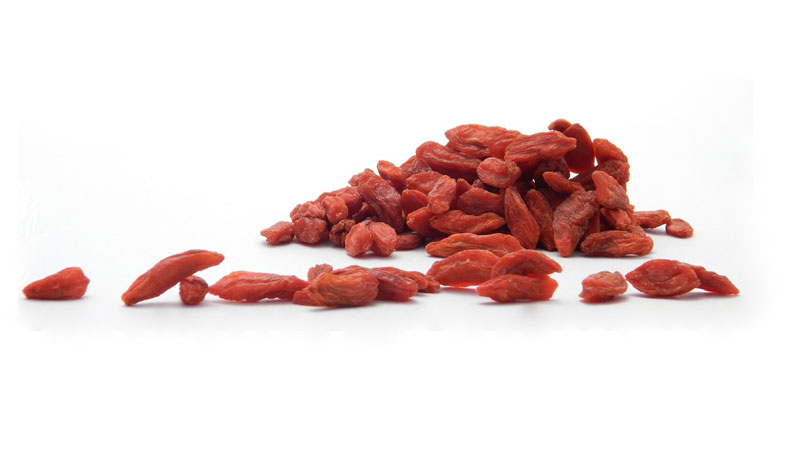- COVID-19 (Peace of Mind)
-
 Asian Healing Arts Academy & Acupuncture480-201-6744
Asian Healing Arts Academy & Acupuncture480-201-6744 - Weekly Specials
Call Now! - Testimonials
I have chronic migraines and have tried literally everything (drugs, blocks, bio-feedback, massages, surgeries, more drugs) I was referred to Mary for acupuncture. I am now drug-free and love my life. I exercise every day and drink my herbal teas and could not be happier. If you are afraid of giving up on western doctors, don’t be, Mary has been a God-send to me. I’m getting my life back and couldn’t be happier.
-Kathy
Mary is a knowledgeable, skilled acupunture physian and her treatments are given from the heart. She has shown me compassion, wisdom and medicinal quality herbal teas that combined with acupuncture has helped me tremendously. My life has been stressed by a prolonged family and legal conflict. I am calmer, I have my appetite again and I keep getting my energy back. Mary has been a blessing. To have her treatments has really made a difference. Thank you, I am grateful.
... Read more »“Our weekly golf outings and scores have only gotten better, no more tennis elbow! Were gonna go for the ZenYOGA next….and after that who knows!”
“After being told by 4 medical specialists that there was no cause, no cure for a condition called pigmented purpura dermatosis, (a condition which causes capillaries to burst leaving unsightly skin lesions.) I began acupuncture and chinese herbal medicine with Mary, only after 4 treatments the lesions began to fade. Now after 6 months they are completely gone! I encourage everyone to see Mary!”
“I was diagnosed as being Bi-Polar and have been on meds for years. I’m currently in menopause and was on hormone replacement therapy, thanks to Mary & OM I have stopped taking the HRT drugs as well as the Bi-Polar meds. I have never felt so much energy and balance in life. God Bless you Mary!”
-
-
Latest Articles:
- • Embracing the Season with Tips for a Healthy Fall •
- • Savor the Season: The Best Recipes for Fall •
- • The Best Places to See Fall Foliage in the United States •
Chinese Medicine
Goji Berries – The Little Red Superfruit
The shriveled red Goji berry doesn’t look like much at first, but this Himalayan fruit, otherwise known in Tibet as the “key to eternal youth”, is a superfood packed with vitamins, minerals, and amino acids. You can add it to almost any meal, it tastes delicious, and it may add some pep to your step.
 Chinese medicine has known about this berry, Lycium barbarum, or “wolfberry”, for many years, and it’s used as an herbal remedy to treat many age related ailments, as it’s been known to treat the root and essence of the body, the kidneys, and the liver, which stores blood. You can eat it alone or along with other herbs that boost the benefits to create a formula specific to your individual needs. Your acupuncturist is the best person to assess and create a formula for you.
Chinese medicine has known about this berry, Lycium barbarum, or “wolfberry”, for many years, and it’s used as an herbal remedy to treat many age related ailments, as it’s been known to treat the root and essence of the body, the kidneys, and the liver, which stores blood. You can eat it alone or along with other herbs that boost the benefits to create a formula specific to your individual needs. Your acupuncturist is the best person to assess and create a formula for you.
The Goji has 21 minerals, including beta carotene, and trace elements. It also has a powerful antioxidant called zeaxanthin, B vitamins, and has more vitamin C than oranges. The Goji berry also has fiber so you feel full (hello weight loss!) and has about 13% protein depending on the dosage. The Goji contains lutein, which benefits the eyes, as well as the mentioned beta carotene which also benefits the eyes and skin.
What all of these nutrients tell us is that this berry helps keep the blood more alkaline, white blood cells are fortified along with your immune system, and all the amino acids, vitamins and minerals means oxygen is transported nicely through the body. So what do you get? Well-being, more energy, vitality, stronger immunity, and healthy eyes.
The Goji berry tastes sweet and a bit sour and is bright in color. It’s best to buy organic and good quality berries, or you can grow your own.
Some benefits may include improved vision, more energy, lowering of bad cholesterol, increased energy, better sleep, weight loss, improved hair thickness and luster, and less dryness. Goji berries also may help fight depression.
You can include these berries in trail mixes, cereals, or salads, or just eat them straight from your hand. How much to eat to stay healthy? The answer to that depends on your individual needs and palate. Start with a few grams, then a handful, and go from there according to how you feel and what your body is in the mood for.
Goji berries belong to the nightshade family, foods that contain solanine. These foods include tomatoes, potatoes, peppers, and eggplant. Some individuals, like those who have arthritis, may have an allergy to these foods and it is not recommended for them in that case. If you are taking some medications like blood thinners, blood pressure medication, or diabetes medicine this berry may not be right for you. It also is a “warming” food, so refrain if you have a fever or the flu. If you are fine with those foods and don’t run too hot, go ahead and indulge in what might become your favorite berry. Benefits may vary depending on the individual, and it’s best to start with a smaller amount and see how you feel. If these aren’t for you, you can also try similar foods like the acai berry, elderberry, or tart cherries. It’s best to eat them by themselves instead of in a juice with other fruits.
5 Ways to Use Goji Berries
Goji berries have been used for their healing and nutritional properties for thousands of years. Traditional Chinese Medicine incorporates goji berries into different meals and healing tonics in order to cleanse the body. Goji berries have been said to have many different health benefits when used as a nutritional and super-herbal tonic. From anti-aging to promoting good eye health, the goji berry works on the body in many ways. Here are five ways for you to use goji berries so they too can benefit you.
- Make a tea. Goji berries are very popular in teas. Some people swear by goji berry tea, by making it a part of their daily diet. By adding a generous handful of goji berries to a glass of hot water you can reap their healing and restorative properties.
- Eat them raw. This is the easiest and go-to way to consume goji berries, just eat them! These berries will give off a mild sweet and tangy taste, but can easily be enjoyed and stomached while raw. Small to medium-sized handfuls of goji berries a day will do the trick.
- Smoothies. Goji berries are great in smoothies. They take your already healthful snack and increase the benefits. Soak the berries in cold water before adding them to your smoothie in order to get them juicy and hydrated. After the berries are plump in size, add the goji berries to whatever smoothie you are making and blend to your desired consistency.
- Trail Mix. Traditionally, goji berries have been known to be consumed once they are dried. Dehydrate some berries and add them to your trail snacks for the road!
- Pastries. I’m sure you have had a blueberry scone before, or even a cranberry one. Try making your breakfast a little more interesting by incorporating goji berries into your pastry intake. Goji berries make for a great addition to scones, muffins and pancakes.
Nutrition for Heart Health OM Nutrition & Hypertension
 Acupuncture Cave Creek, Integrative Medicine in Cave Creek, Chinese Medicine in North Scottsdale, Cave Creek , Phoenix Oriental medicine (OM) Scottsdale, Phoenix,Cave Creek nutrition combines ancient wisdom with modern science. OM nutrition is a holistic approach, which aims to balance all five flavors within most meals with one or two flavors being emphasized for therapeutic purposes. OM nutrition for a hypertension emphasizes bitter flavors, sour flavors and energetically-cooling foods.
Acupuncture Cave Creek, Integrative Medicine in Cave Creek, Chinese Medicine in North Scottsdale, Cave Creek , Phoenix Oriental medicine (OM) Scottsdale, Phoenix,Cave Creek nutrition combines ancient wisdom with modern science. OM nutrition is a holistic approach, which aims to balance all five flavors within most meals with one or two flavors being emphasized for therapeutic purposes. OM nutrition for a hypertension emphasizes bitter flavors, sour flavors and energetically-cooling foods.
OM theory states the bitter flavor benefits the heart in moderation but an excess is harmful as it has a drying effect; for example, coffee is bitter. In moderation coffee acts as vasodilator increasing circulation but in excess it can raise blood pressure and has a diuretic effect. Modern scientific research has discovered while the human genome has 25 bitter taste receptors 12 of these are expressed in the human heart. continue reading
Acupuncture for Immune Deficiency
 There are more than 80 chronic illnesses that are immune related including rheumatoid arthritis, type 1 diabetes, thyroid disease, inflammatory bowel disease, lupus, and celiac disease.
There are more than 80 chronic illnesses that are immune related including rheumatoid arthritis, type 1 diabetes, thyroid disease, inflammatory bowel disease, lupus, and celiac disease.
Autoimmune diseases result when the immune system mistakenly attacks its own body’s tissues. Immune deficiency is more common than most people think; around 20 percent of the population suffers from some form of an autoimmune disorder, according to the American Autoimmune Related Diseases Association. continue reading
The Inside Scoop on Cholesterol and The One Chinese Herb That Could Crush It
 According to the Centers for Disease Control and Prevention (CDC), people who suffer from high LDL cholesterol are twice as likely to develop heart disease – the number one cause of death in both men and women (source). High levels of LDL cholesterol is a serious health condition that affects approximately 71 million adults in the U.S. (1 out 3). But an ancient Chinese herb is turning heads in the medical community due to its surprisingly powerful effects on cholesterol levels.
According to the Centers for Disease Control and Prevention (CDC), people who suffer from high LDL cholesterol are twice as likely to develop heart disease – the number one cause of death in both men and women (source). High levels of LDL cholesterol is a serious health condition that affects approximately 71 million adults in the U.S. (1 out 3). But an ancient Chinese herb is turning heads in the medical community due to its surprisingly powerful effects on cholesterol levels.

